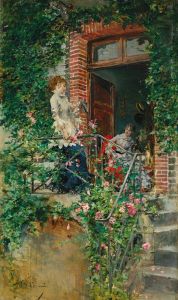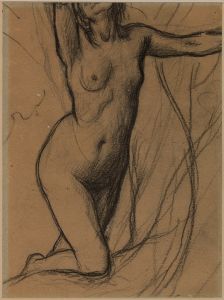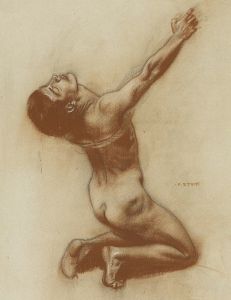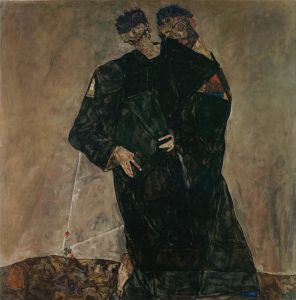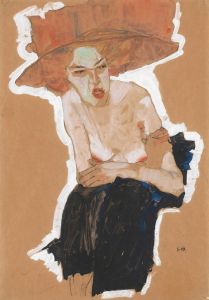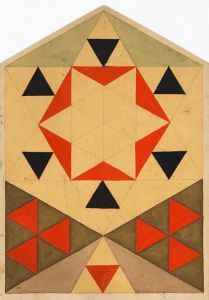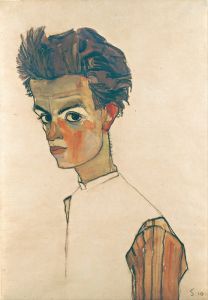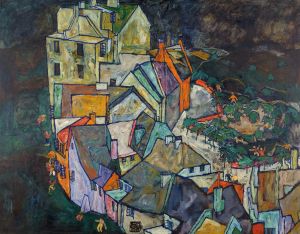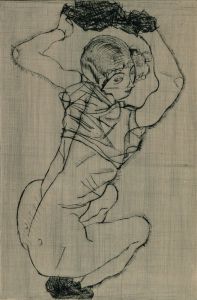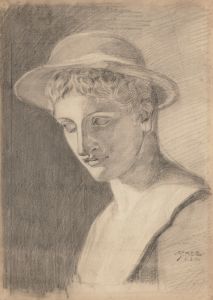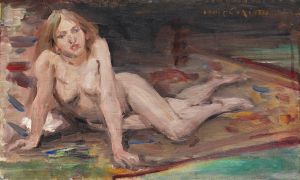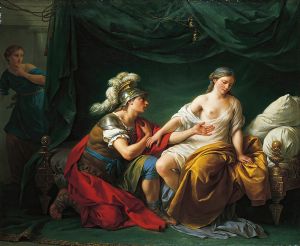
Female nude kneeling on carpet
A hand-painted replica of Egon Schiele’s masterpiece Female nude kneeling on carpet, meticulously crafted by professional artists to capture the true essence of the original. Each piece is created with museum-quality canvas and rare mineral pigments, carefully painted by experienced artists with delicate brushstrokes and rich, layered colors to perfectly recreate the texture of the original artwork. Unlike machine-printed reproductions, this hand-painted version brings the painting to life, infused with the artist’s emotions and skill in every stroke. Whether for personal collection or home decoration, it instantly elevates the artistic atmosphere of any space.
"Female Nude Kneeling on Carpet" is a painting by the Austrian artist Egon Schiele, created in 1911. Schiele, born on June 12, 1890, in Tulln an der Donau, Austria, was a protégé of Gustav Klimt and is known for his distinctive style and controversial subject matter. His work is often characterized by its raw, emotional intensity and its exploration of the human form.
This particular painting, "Female Nude Kneeling on Carpet," exemplifies Schiele's fascination with the human body and his ability to convey complex psychological states through his art. The painting depicts a nude woman kneeling on a patterned carpet, her body twisted in a somewhat awkward and vulnerable pose. Schiele's use of line and color is bold and expressive, with the contours of the woman's body sharply defined against the more muted tones of the carpet.
The model's pose is both intimate and confrontational, a hallmark of Schiele's work that often sought to challenge conventional notions of beauty and propriety. The woman's gaze is directed away from the viewer, adding a sense of introspection and melancholy to the composition. Schiele's treatment of the female form is unidealized, emphasizing the angularity and fragility of the body rather than adhering to traditional standards of beauty.
Schiele's career was marked by both critical acclaim and controversy. His explicit depictions of sexuality and his unconventional approach to portraiture often provoked strong reactions from both the public and the art establishment. Despite this, he gained a significant following and was supported by influential figures such as Klimt. Schiele's work is often associated with the Expressionist movement, which sought to convey emotional experience rather than physical reality.
The year 1911, when "Female Nude Kneeling on Carpet" was created, was a particularly productive period for Schiele. He produced numerous works that year, many of which focused on the human figure and explored themes of sexuality, identity, and existential angst. This period also saw Schiele's increasing engagement with the avant-garde art scene in Vienna, where he exhibited alongside other leading artists of the time.
Tragically, Schiele's career was cut short by his untimely death in 1918 at the age of 28, during the Spanish flu pandemic. Despite his brief career, Schiele left a lasting impact on the art world, and his works continue to be celebrated for their emotional depth and technical innovation.
"Female Nude Kneeling on Carpet" remains an important example of Schiele's artistic vision and his ability to capture the complexities of the human condition. The painting is held in high regard by art historians and collectors alike, and it continues to be studied and admired for its bold composition and psychological intensity.





